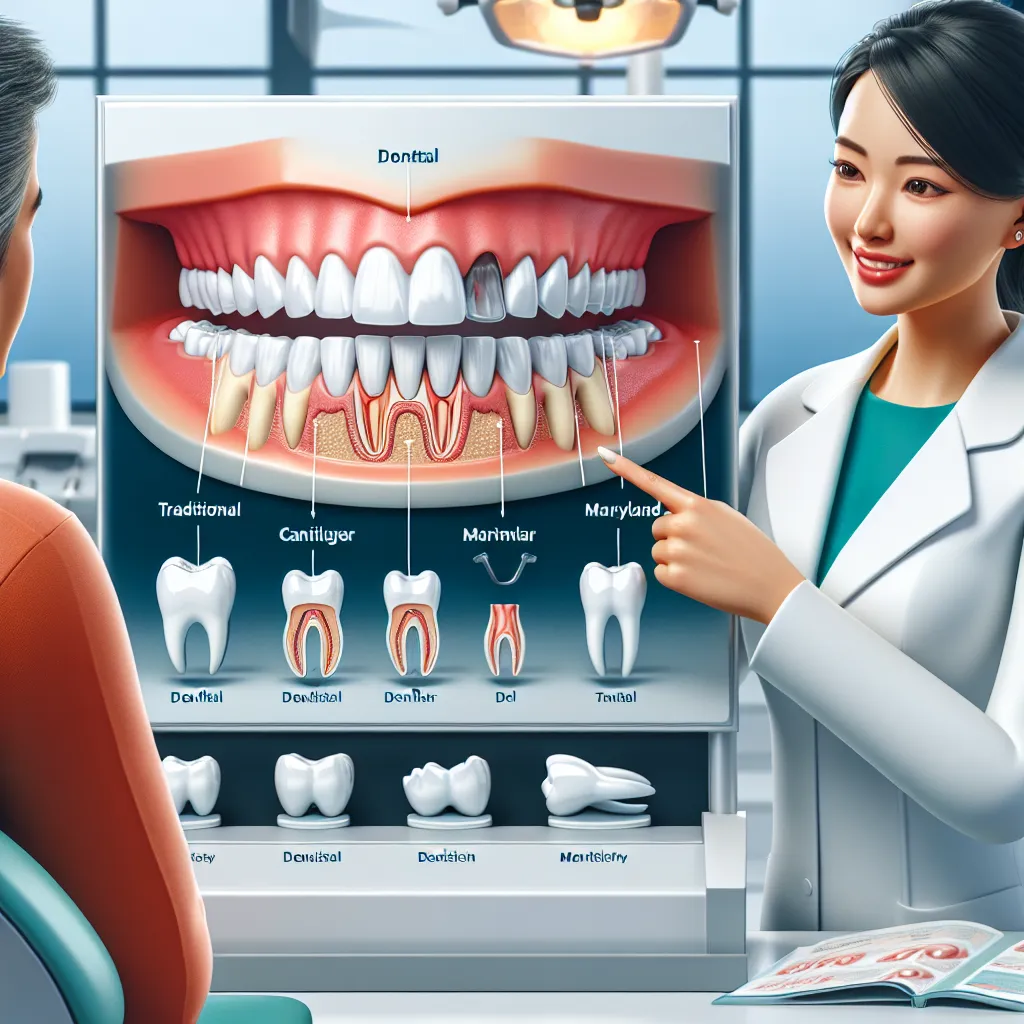
Understanding Dental Bridge Options for Replacing Missing Teeth
When it comes to replacing missing teeth, understanding the various dental bridge options available is crucial. In this blog post, we will explore traditional dental bridge procedures, the benefits of implant-supported bridges, and the differences between cantilever and Maryland bridges. Each option offers unique advantages, so let’s delve into the world of dental bridges to help you make an informed decision for restoring your smile.
Traditional Dental Bridge Procedures
When it comes to restoring a missing tooth, traditional dental bridge procedures have been a reliable option for many years. These procedures offer a fixed solution that not only improves the aesthetics of your smile but also restores functionality to your chewing and speaking abilities. Let’s explore the different aspects of traditional dental bridges and how they can benefit you.
1. Understanding Traditional Dental Bridges
Traditional dental bridges consist of one or more artificial teeth, known as pontics, that are held in place by dental crowns on adjacent natural teeth or dental implants. These bridges are custom-made to blend seamlessly with your natural teeth, providing a natural-looking smile.
2. The Procedure Process
The process of getting a traditional dental bridge typically involves multiple dental visits. During the initial consultation, your dentist will examine your oral health, discuss treatment options, and create a treatment plan tailored to your specific needs. Subsequent visits will involve preparing the abutment teeth, taking impressions, and finally, placing the bridge securely in your mouth.
3. Benefits of Traditional Dental Bridges
Traditional dental bridges offer various benefits, including restoring your ability to chew and speak properly, preventing shifting of adjacent teeth, maintaining facial structure, and enhancing your smile’s appearance. These bridges are durable and can last for many years with proper care, providing you with a long-term tooth replacement solution.
4. Caring for Your Dental Bridge
To ensure the longevity of your traditional dental bridge, it’s essential to maintain good oral hygiene practices. Brushing and flossing regularly, scheduling routine dental check-ups, and avoiding hard or sticky foods can help prevent damage to your bridge and surrounding teeth.
5. Conclusion
In conclusion, traditional dental bridge procedures are a time-tested solution for replacing missing teeth, offering both functional and aesthetic benefits. By understanding the process, benefits, and proper care techniques, you can make an informed decision about restoring your smile with a traditional dental bridge.
Implant-Supported Dental Bridges
Implant-supported dental bridges are a cutting-edge solution for individuals looking to restore their smile and oral health with a natural-looking and long-lasting option. Unlike traditional bridges that rely on adjacent teeth for support, implant-supported bridges are secured in place by dental implants that are surgically placed into the jawbone.
1. The Advantages of Implant-Supported Dental Bridges
One of the key advantages of implant-supported dental bridges is their stability and durability. By integrating with the jawbone, implants provide a sturdy foundation for the bridge, allowing for improved chewing functionality and comfort. Additionally, these bridges help prevent bone loss in the jaw and maintain the overall structure of the face.
2. The Implant Process
The process of getting an implant-supported dental bridge involves multiple steps, including the surgical placement of the implants, a healing period to allow for osseointegration, and the attachment of the custom bridge. While the process may take several months to complete, the result is a strong and natural-looking smile that can last for many years with proper care.
3. Candidacy and Considerations
Not everyone is a suitable candidate for implant-supported dental bridges. A sufficient amount of healthy jawbone is required to support the implants, and good oral hygiene practices are essential for long-term success. It’s important to consult with a qualified dental professional to determine if implant-supported bridges are the right option for your individual needs.
Cantilever vs. Maryland Bridges
When it comes to replacing missing teeth, Cantilever and Maryland bridges are two popular options that offer unique benefits and considerations. Let’s delve into the differences between these two types of dental bridges.
1. Cantilever Bridges
1) Cantilever bridges are a type of dental bridge where the pontic (false tooth) is supported by a single crown on only one side of the gap. This design makes them ideal for areas with lower stress and where there is only one adjacent tooth available for support.
2) The Cantilever bridge provides a strong and durable solution for missing teeth, especially in the front of the mouth where less biting force is exerted.
3) However, one drawback of Cantilever bridges is that they can exert more pressure on the supporting tooth, potentially leading to issues like tooth sensitivity or damage over time.
2. Maryland Bridges
1) Maryland bridges, also known as resin-bonded bridges, consist of a pontic held in place by a metal or porcelain framework that is bonded to the back of the adjacent teeth with minimal preparation. This type of bridge is less invasive compared to traditional bridges.
2) Maryland bridges are a conservative option that preserves the structure of the adjacent teeth as they require minimal alteration of the natural teeth for placement.
3) However, Maryland bridges may not be suitable for areas with high biting pressure as the bonding may not withstand heavy chewing forces over time.
3. Choosing the Right Option
1) When deciding between Cantilever and Maryland bridges, it is essential to consider the location of the missing tooth, the condition of the adjacent teeth, and the amount of force the bridge will need to withstand.
2) Consultation with a qualified dentist is crucial to determine the most suitable option based on individual needs and preferences.
3) Ultimately, both Cantilever and Maryland bridges offer effective solutions for replacing missing teeth, each with its own set of advantages and considerations.